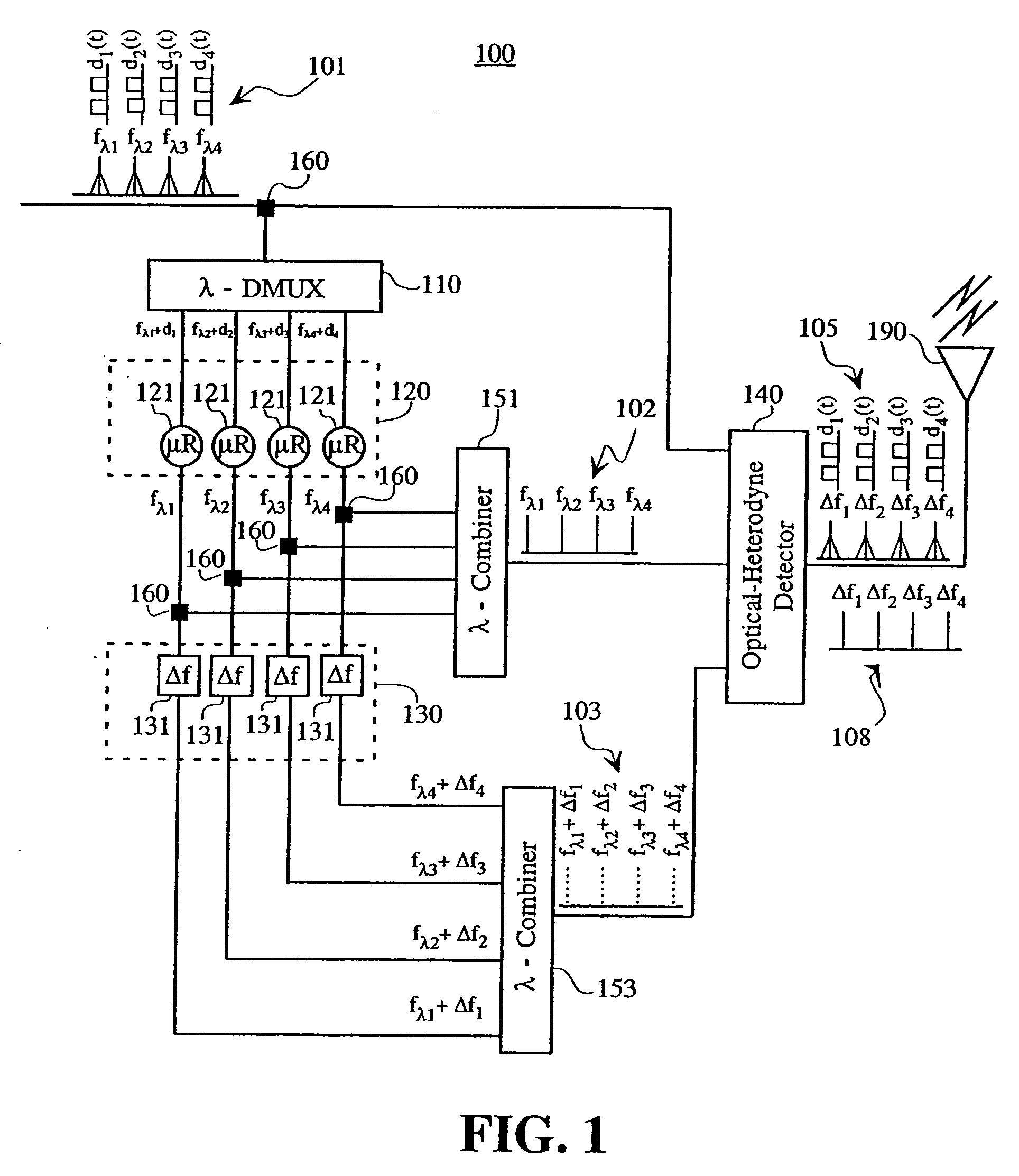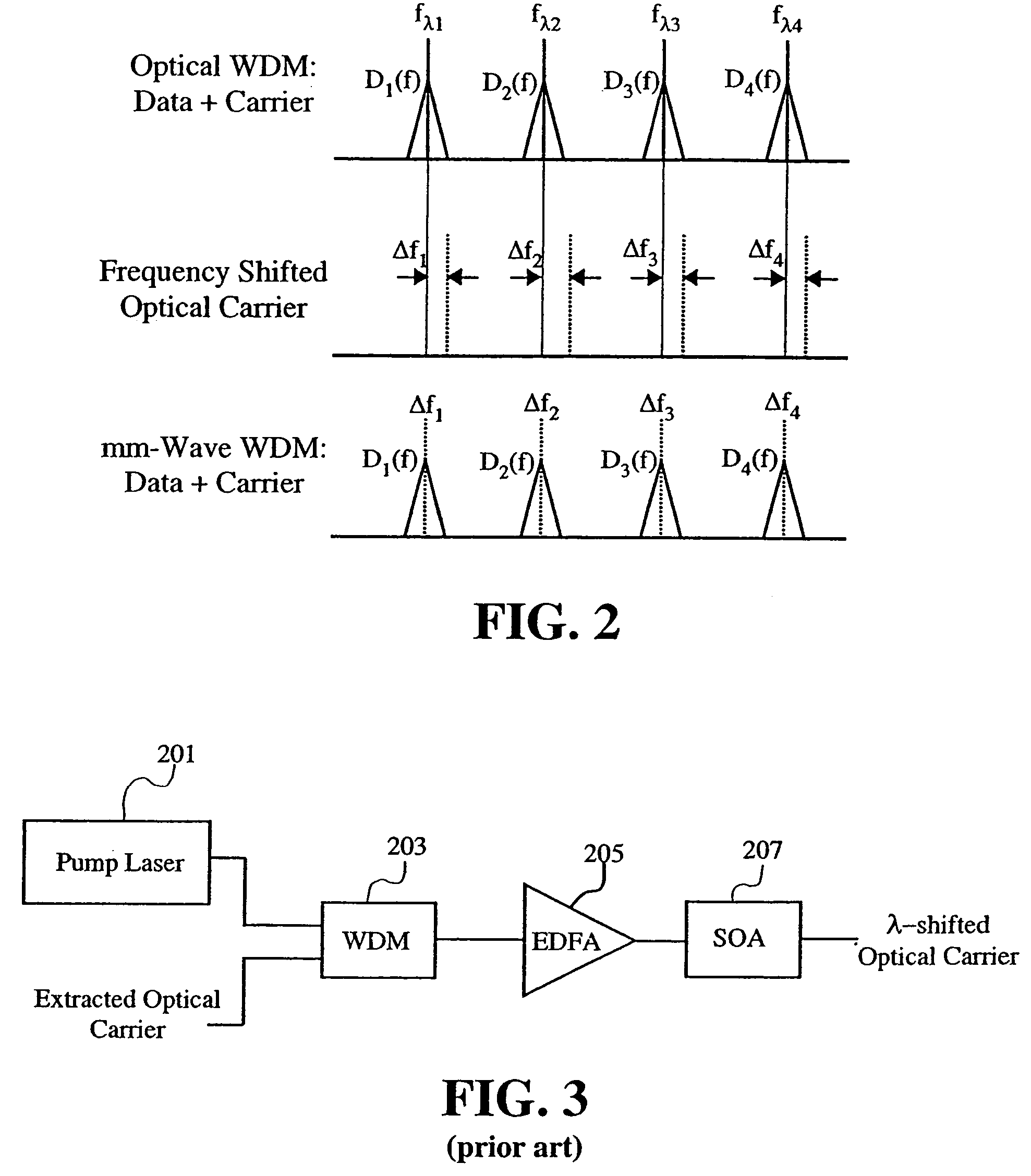Optical channelizer utilizing resonant microsphere coupling
- Summary
- Abstract
- Description
- Claims
- Application Information
AI Technical Summary
Benefits of technology
Problems solved by technology
Method used
Image
Examples
Embodiment Construction
[0031]The present invention will now be described more fully hereinafter with reference to the accompanying drawings, in which preferred embodiments of the invention are shown. This invention may be embodied in many different forms and should not be construed as limited to the embodiments set forth herein. Specifically, while the embodiments described below present examples of systems or subsystems having a single channel or four channels, the present invention is not limited to single channel or four channel embodiments.
[0032]A block diagram of an optical frequency to wireless frequency converter system 100 according to the present invention is shown in FIG. 1. The system 100 receives a composite OWDM network optical signal 101 containing multiple optical channels in which each optical channel has a different optical carrier frequency. The spectrum of the composite optical signal 101 with four optical channels is shown in FIG. 1. Each optical channel contains an optical carrier sig...
PUM
 Login to View More
Login to View More Abstract
Description
Claims
Application Information
 Login to View More
Login to View More - R&D
- Intellectual Property
- Life Sciences
- Materials
- Tech Scout
- Unparalleled Data Quality
- Higher Quality Content
- 60% Fewer Hallucinations
Browse by: Latest US Patents, China's latest patents, Technical Efficacy Thesaurus, Application Domain, Technology Topic, Popular Technical Reports.
© 2025 PatSnap. All rights reserved.Legal|Privacy policy|Modern Slavery Act Transparency Statement|Sitemap|About US| Contact US: help@patsnap.com



